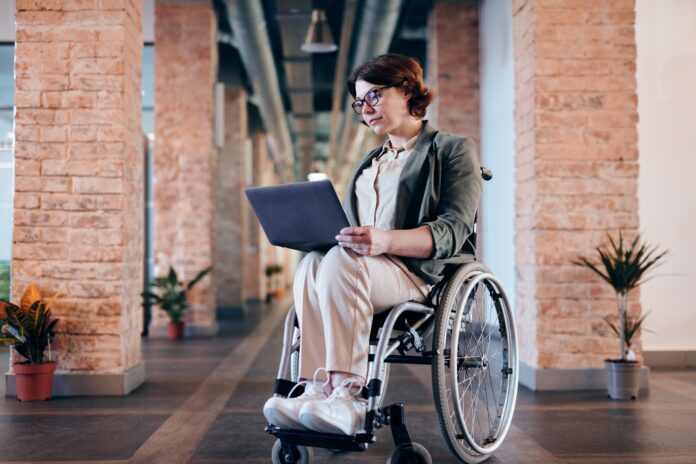Accessible urban environments are essential for fostering inclusive communities. As cities grow and diversify, the imperative to ensure that all residents, regardless of their physical abilities, can navigate and enjoy urban spaces has never been more pressing. This article delves into the multifaceted approach required to build cities that are truly accessible. It is not merely about adhering to regulations or installing facilities; it’s about embedding accessibility into the very fabric of urban planning and design. From sidewalks and public buildings to transportation and digital infrastructure, every aspect of city life must be scrutinised through the lens of accessibility. This is crucial not only for the empowerment of individuals with disabilities but also for creating a more connected and empathetic urban society.
Understanding the Need for Accessibility in Urban Planning
The necessity for accessibility in urban planning stems from a fundamental human right: the ability to access and use public spaces and services. In the UK, approximately 16 million people live with a disability, highlighting the importance of designing cities that accommodate diverse needs. Accessible urban planning isn’t just about aiding those with disabilities; it benefits parents with strollers, elderly citizens, and even temporarily injured individuals. Moreover, accessible cities encourage greater social inclusion and equality, breaking down barriers that often segregate those with disabilities. From wider sidewalks for wheelchair users to audible traffic signals for the visually impaired, these features ensure that everyone has the opportunity to participate fully in urban life. Recognising this need is the first step towards fostering cities where diversity is accepted and celebrated.
Key Elements of Accessible City Design
Accessible city design revolves around several key elements, each integral to creating an inclusive urban environment. Firstly, physical infrastructure such as ramps, tactile paving, and wide, obstruction-free pathways are crucial. These elements facilitate movement for those with mobility challenges. Equally important is the accessibility of public transportation. Buses, trains, and taxis must be equipped to accommodate wheelchairs and provide clear audio-visual information. Beyond the physical, there’s a need for accessible information and communication technology. Websites and digital services of city departments should be designed with accessibility in mind, ensuring that everyone can access vital information and services online. Additionally, inclusive public spaces, like parks and recreational facilities, need to be designed thoughtfully, considering varied abilities. These key elements, when implemented thoughtfully and consistently, create a cityscape where accessibility is not an afterthought but a fundamental aspect of urban design.
Technological Innovations in Urban Accessibility
Technological innovations play a pivotal role in enhancing urban accessibility. Smart city initiatives are leveraging technology to create more navigable and user-friendly environments for everyone. This includes the development of apps that provide real-time information on accessible routes, public transportation schedules, and available amenities. Augmented reality (AR) is also emerging as a tool to assist visually impaired individuals in navigating cities, offering audio descriptions of surroundings. Additionally, advancements in AI are enabling more sophisticated voice-activated systems and responsive environments. For instance, traffic lights and pedestrian crossings are being equipped with sensors that adapt to the needs of pedestrians with disabilities. These technological solutions not only improve the day-to-day experiences of individuals with disabilities but also contribute to the overall efficiency and safety of urban environments, making cities more liveable for everyone.
Transportation: A Cornerstone of Urban Accessibility
Transportation is fundamental to urban accessibility, and innovations in this sector significantly impact the lives of those with mobility challenges. A key development in this area is the increasing availability of wheelchair-accessible taxis. These vehicles are specially designed to accommodate wheelchairs, making city travel more convenient and inclusive for wheelchair users. The market for wheelchair-accessible taxis for sale is expanding, reflecting a growing recognition of the need for inclusive transportation options. In addition to taxis, public transport systems are also undergoing transformations. Buses and trains are increasingly being fitted with ramps, low-floor designs, and designated spaces for wheelchairs. Moreover, cities are implementing real-time information systems in public transportation to assist travellers with disabilities. These efforts in making transportation accessible are crucial in ensuring that people with disabilities can enjoy the same level of mobility and independence as others, fostering a more inclusive urban society.
Overcoming Challenges in Urban Accessibility
Addressing the challenges in urban accessibility requires a multifaceted approach. One of the primary obstacles is the existing infrastructure, which often doesn’t meet accessibility standards. Retrofitting these structures can be costly and complex. Another challenge is the variability in needs; what works for one disability group might not work for another. This requires planners to adopt a comprehensive approach that considers a wide range of disabilities. Additionally, there’s the challenge of awareness and education. Many city planners and architects may not fully understand the accessibility needs or the best practices in inclusive design. Increased training and awareness programs are essential. Finally, there’s the issue of funding. Implementing accessibility features often requires significant investment, which can be a hurdle for many municipalities. Overcoming these challenges requires commitment, creativity, and collaboration among various stakeholders, including governments, disability advocacy groups, and the private sector.
Community Engagement in Accessibility Planning
Community engagement is a crucial aspect of accessibility planning. Involving those who are directly affected by accessibility issues ensures that solutions are practical and tailored to real needs. This means actively seeking input from individuals with disabilities, caregivers, and accessibility advocates. Methods such as public consultations, focus groups, and surveys can be used to gather feedback and ideas. It’s also important to include diverse voices in these discussions, as accessibility needs can vary greatly based on factors like age, type of disability, and cultural background. Furthermore, community engagement shouldn’t be a one-off event but a continuous process at every planning and implementation stage. This approach leads to better-designed solutions and fosters a sense of ownership and inclusion among community members. Engaged and informed communities are more likely to advocate for and support the necessary changes, making the goal of accessible cities more achievable.
Future Trends in Accessible Urban Development
The future of accessible urban development is poised for transformative changes, driven by technological advancements and a growing commitment to inclusivity. Smart cities are at the forefront, integrating IoT devices and AI to create more responsive and adaptive urban environments. In the coming years, we can expect more widespread adoption of autonomous vehicles, which hold great promise for enhancing mobility for people with disabilities. Another trend is the increasing use of big data and analytics to identify and address accessibility gaps in real-time. There’s also a growing emphasis on sustainable and green design that incorporates accessibility features, like inclusive green spaces and eco-friendly, accessible public transport. These trends indicate a shift towards urban environments that accommodate all citizens and enhance their quality of life, establishing a new standard for what it means to be a truly inclusive city.
Conclusion
The future of accessible urban development is poised for transformative changes, driven by technological advancements and a growing commitment to inclusivity. Smart cities are at the forefront, integrating IoT devices and AI to create more responsive and adaptive urban environments. In the coming years, we can expect more widespread adoption of autonomous vehicles, which greatly promise to enhance mobility for people with disabilities. Another trend is the increasing use of big data and analytics to identify and address accessibility gaps in real-time. There’s also a growing emphasis on sustainable and green design incorporating accessibility features, like inclusive green spaces and eco-friendly, accessible public transport. These trends indicate a shift towards urban environments that accommodate all citizens and enhance their quality of life, establishing a new standard for what it means to be a truly inclusive city.






